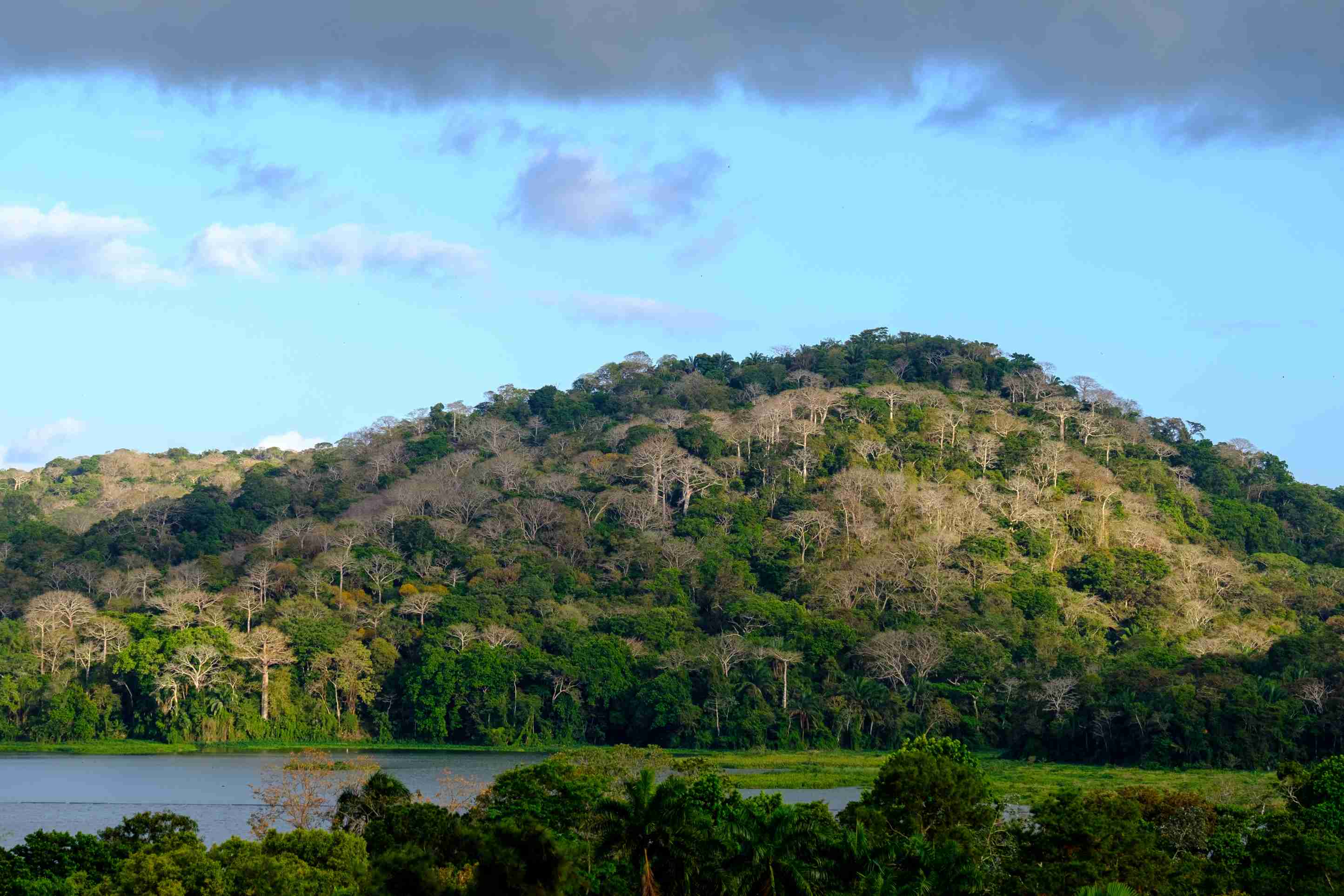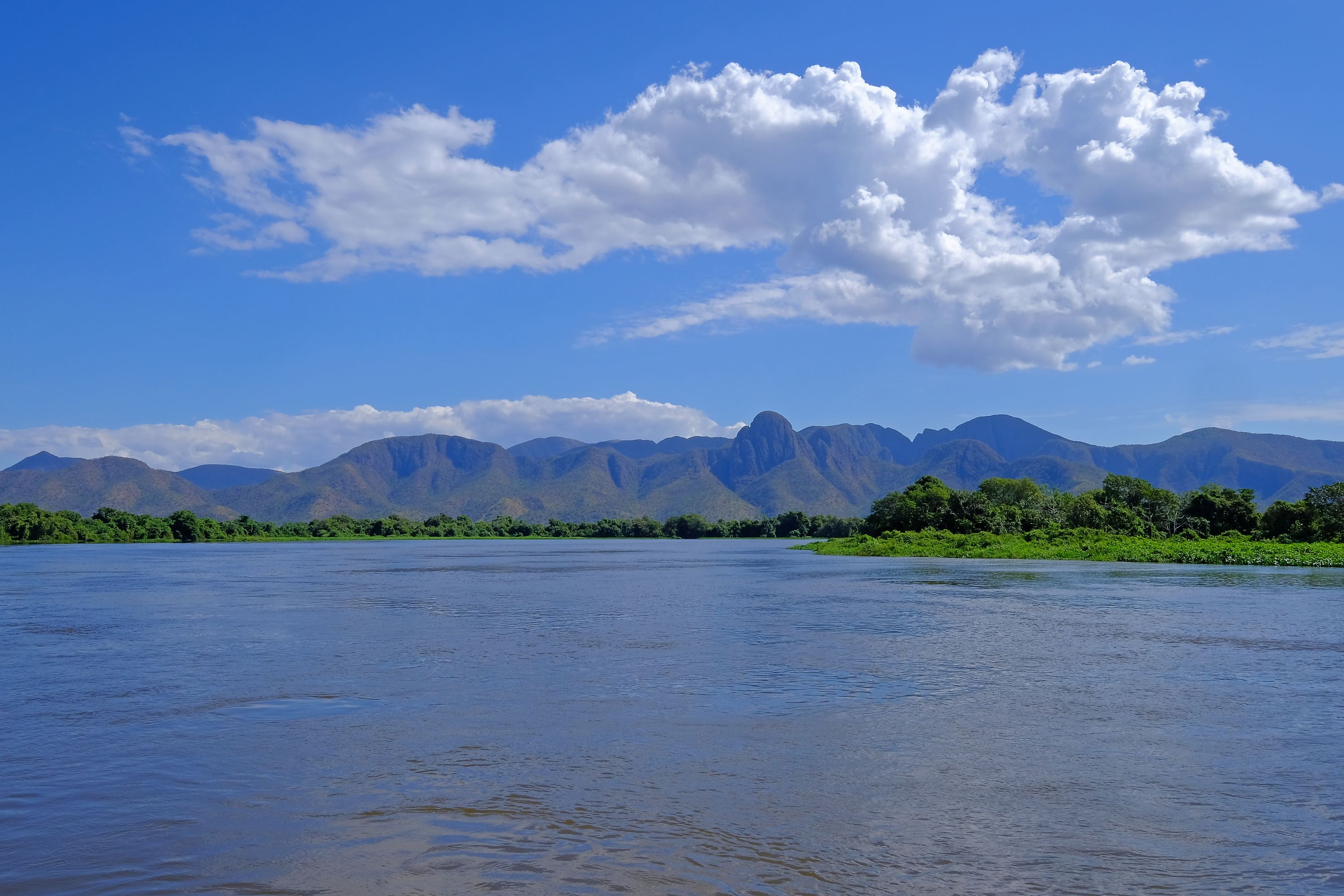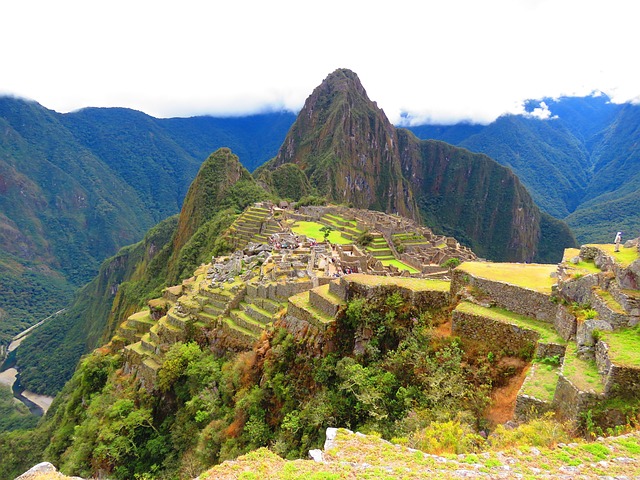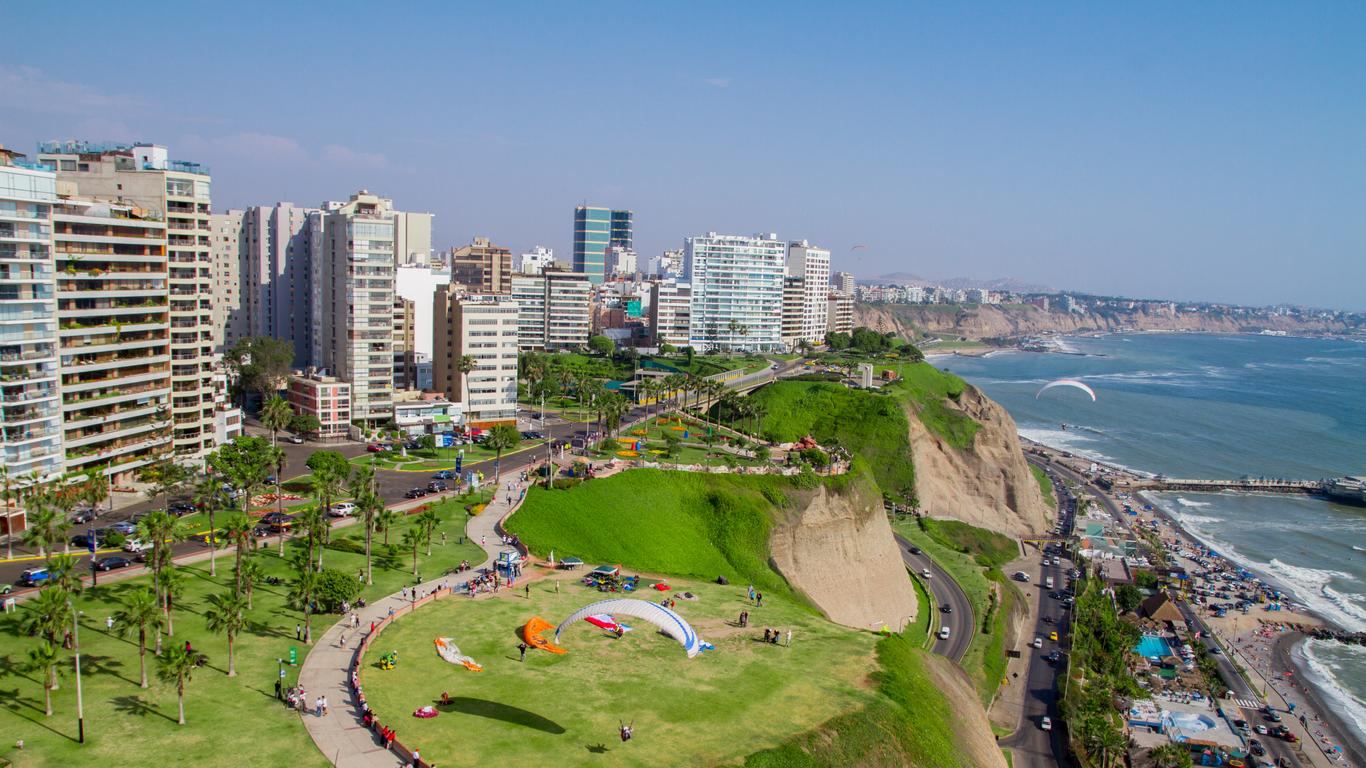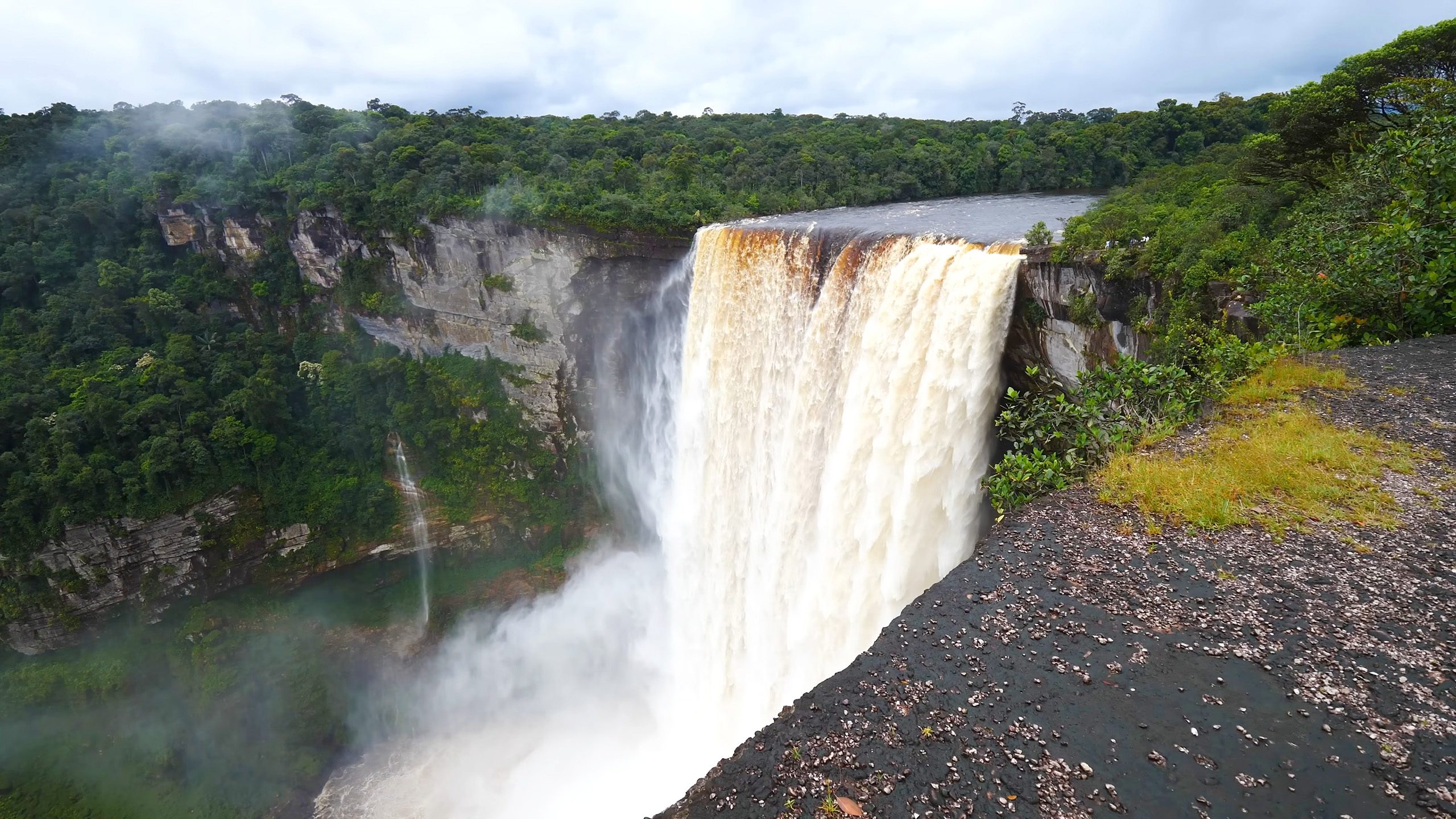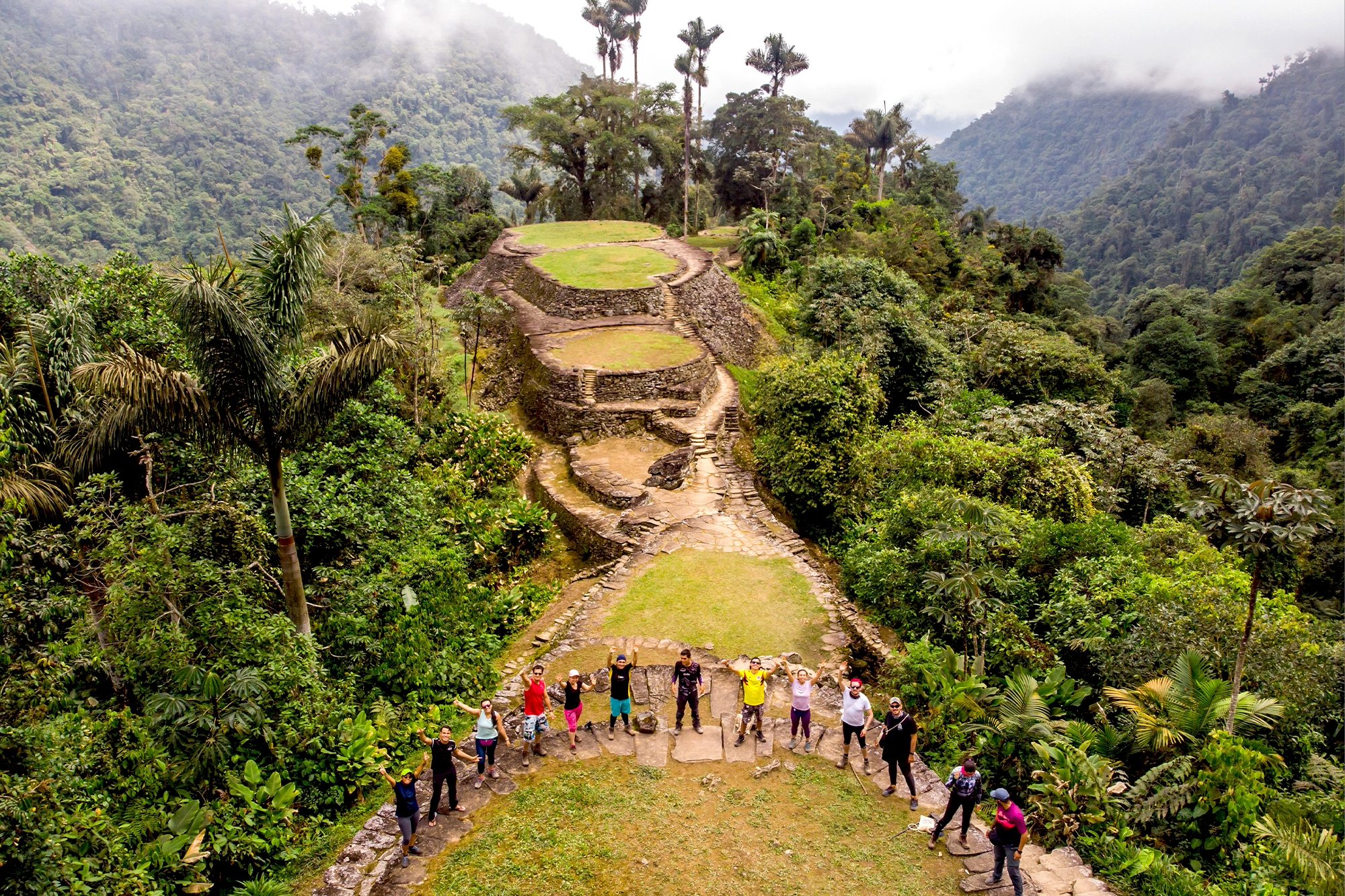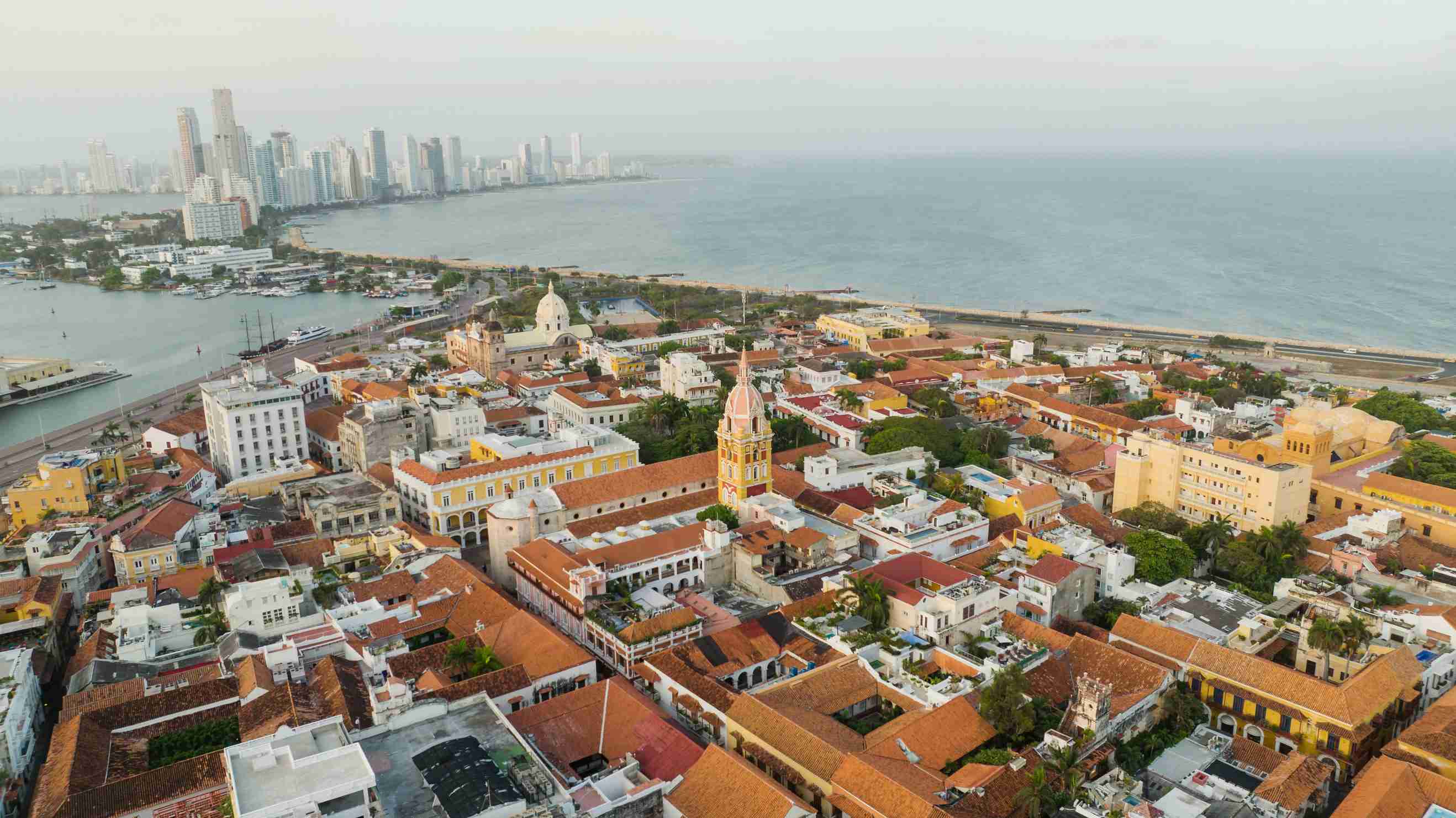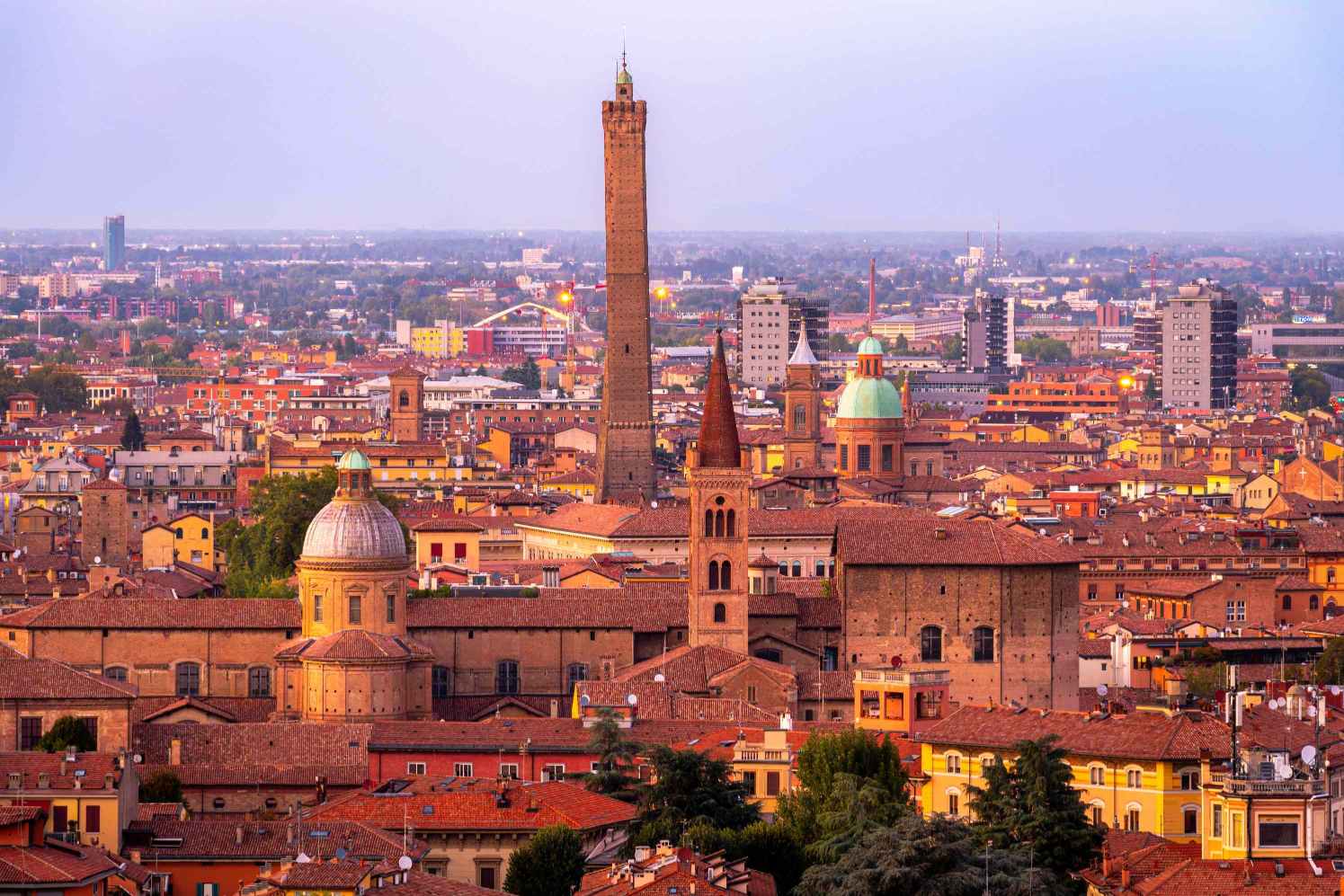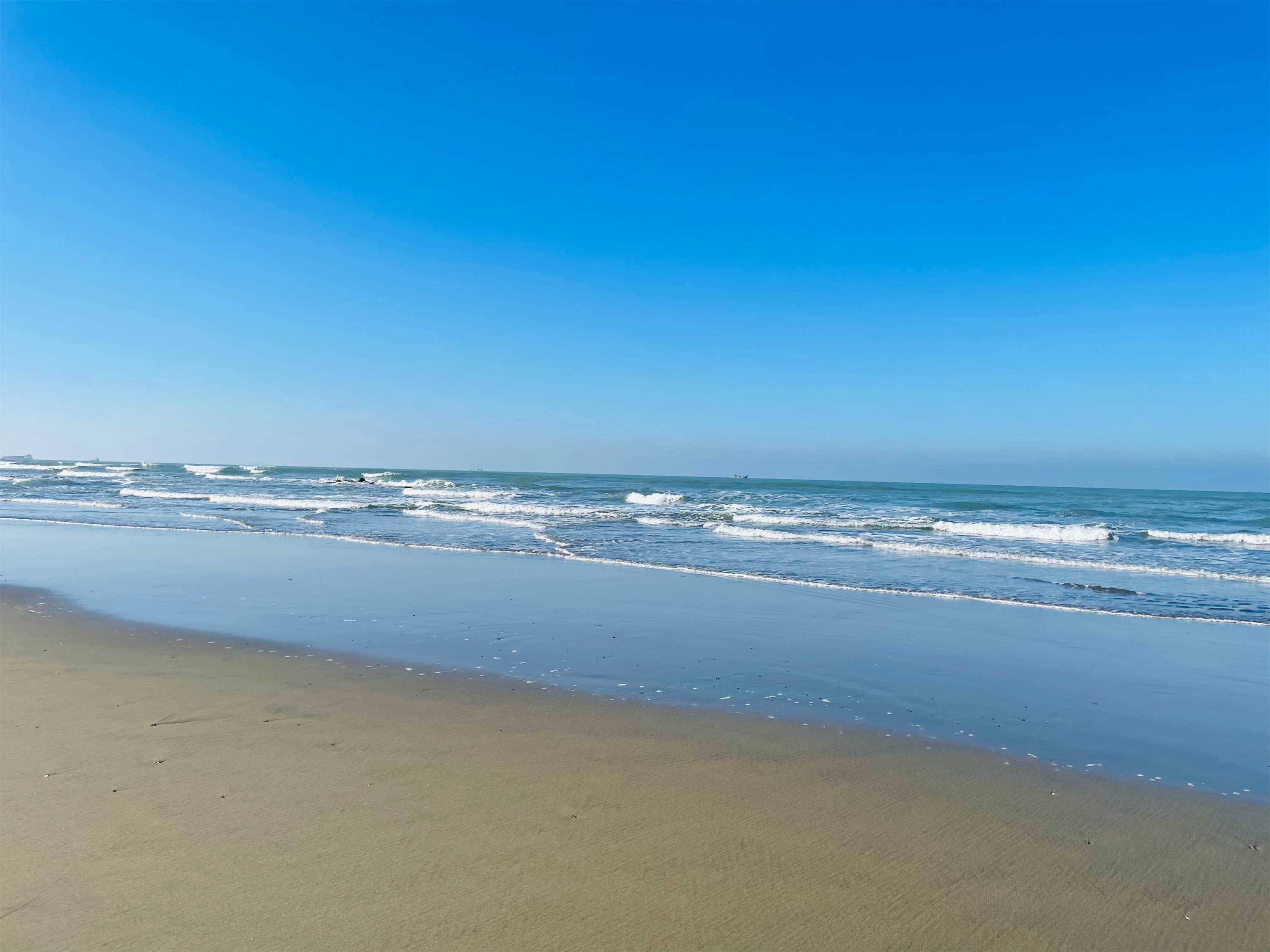Nestled in the heart of the Himalayas, Bhutan is a mystical kingdom renowned for its breathtaking landscapes, vibrant culture, and unwavering commitment to Gross National Happiness (GNH). Steeped in tradition and spirituality, Bhutan offers travelers a unique opportunity to immerse themselves in a world of ancient monasteries, sacred mountains, and serene valleys, where the pace of life is dictated by the rhythm of nature and the values of harmony and contentment.



Main Attractions of Bhutan:
- Tiger’s Nest Monastery (Paro Taktsang): Perched precariously on the edge of a cliff, Tiger’s Nest Monastery is one of Bhutan’s most iconic landmarks and a testament to the country’s rich Buddhist heritage. Accessible via a challenging trek through pine forests and steep trails, this sacred site offers panoramic views of the surrounding mountains and valleys.
- Punakha Dzong: Explore the majestic Punakha Dzong, a fortress-monastery located at the confluence of two rivers in the Punakha Valley. Known for its intricate woodwork, ornate architecture, and scenic location, Punakha Dzong is considered one of the most beautiful dzongs in Bhutan and serves as the winter residence of the Chief Abbot of Bhutan.
- Dochula Pass: Journey to Dochula Pass, a mountain pass located on the road from Thimphu to Punakha, known for its panoramic views of the Himalayas and the 108 chortens (stupas) that dot the landscape. On a clear day, visitors can enjoy sweeping vistas of snow-capped peaks stretching across the horizon.
- Phobjikha Valley: Discover the tranquil beauty of Phobjikha Valley, a glacial valley in central Bhutan renowned for its pristine environment and unique wildlife, including the endangered black-necked cranes that migrate here from Tibet each winter. Explore the valley on scenic walks, visit the Gangtey Monastery, and learn about the conservation efforts to protect this fragile ecosystem.
- Thimphu: Experience the vibrant capital city of Thimphu, where ancient traditions blend seamlessly with modernity. Visit the Tashichho Dzong, explore the bustling weekend market, and immerse yourself in Bhutanese culture at the National Folk Heritage Museum and the National Textile Museum.
From the awe-inspiring heights of Tiger’s Nest Monastery to the tranquil valleys of Phobjikha, Bhutan offers travelers a journey of discovery and enlightenment amidst the timeless beauty of the Himalayas. Whether you’re exploring ancient monasteries, hiking through pristine landscapes, or experiencing the warmth and hospitality of the Bhutanese people, the Kingdom of Happiness invites you to embark on a transformative adventure that nourishes the body, mind, and soul.
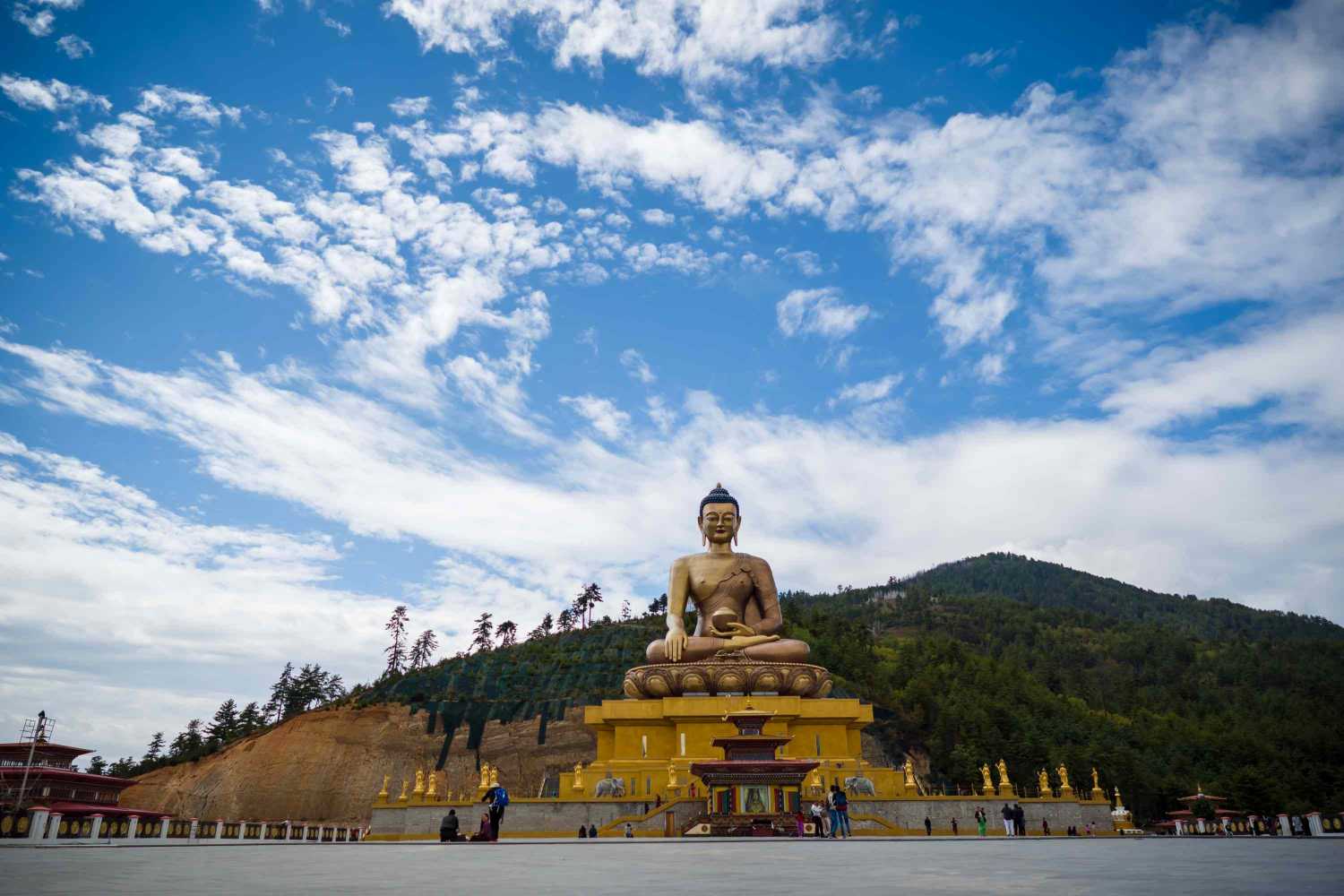


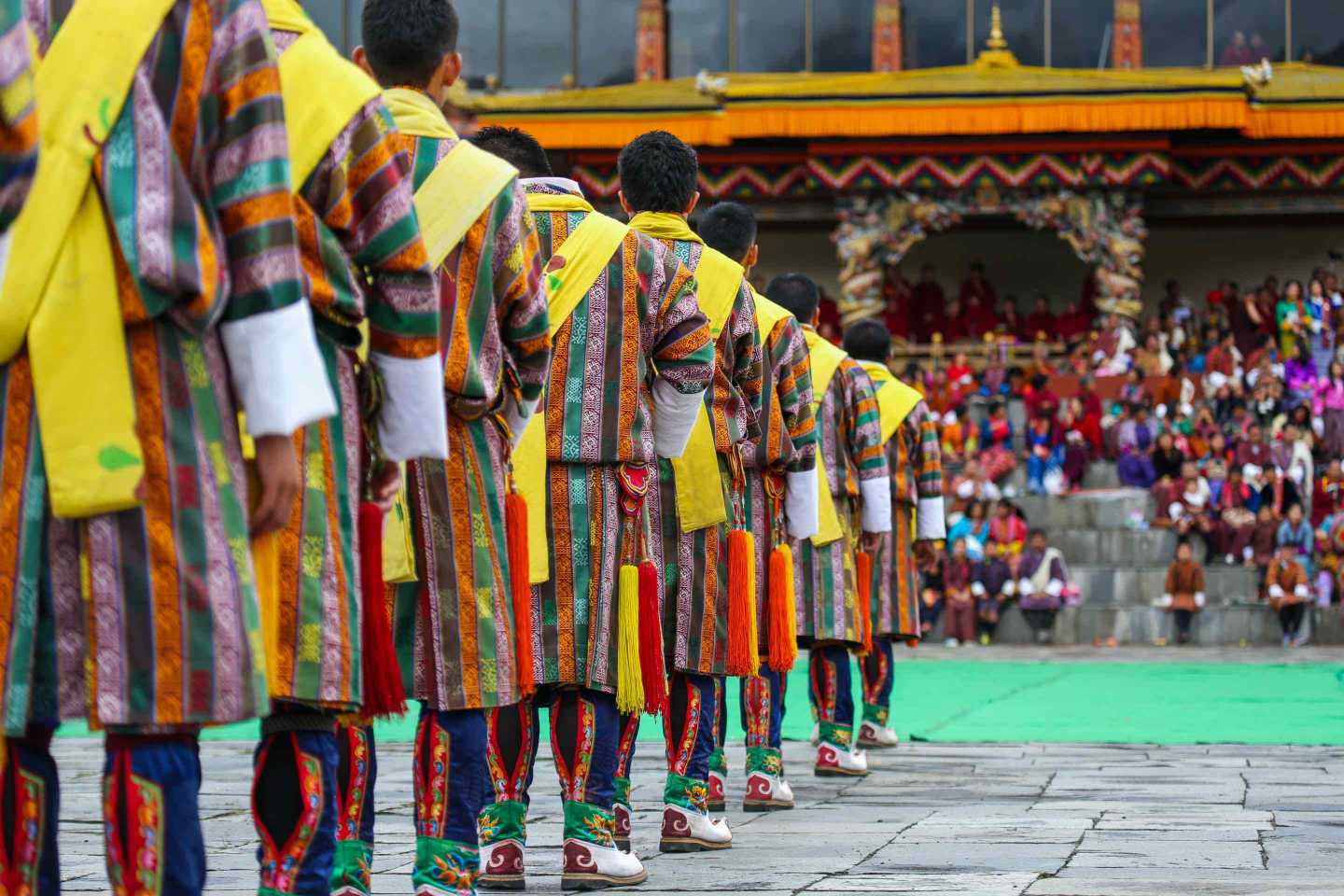

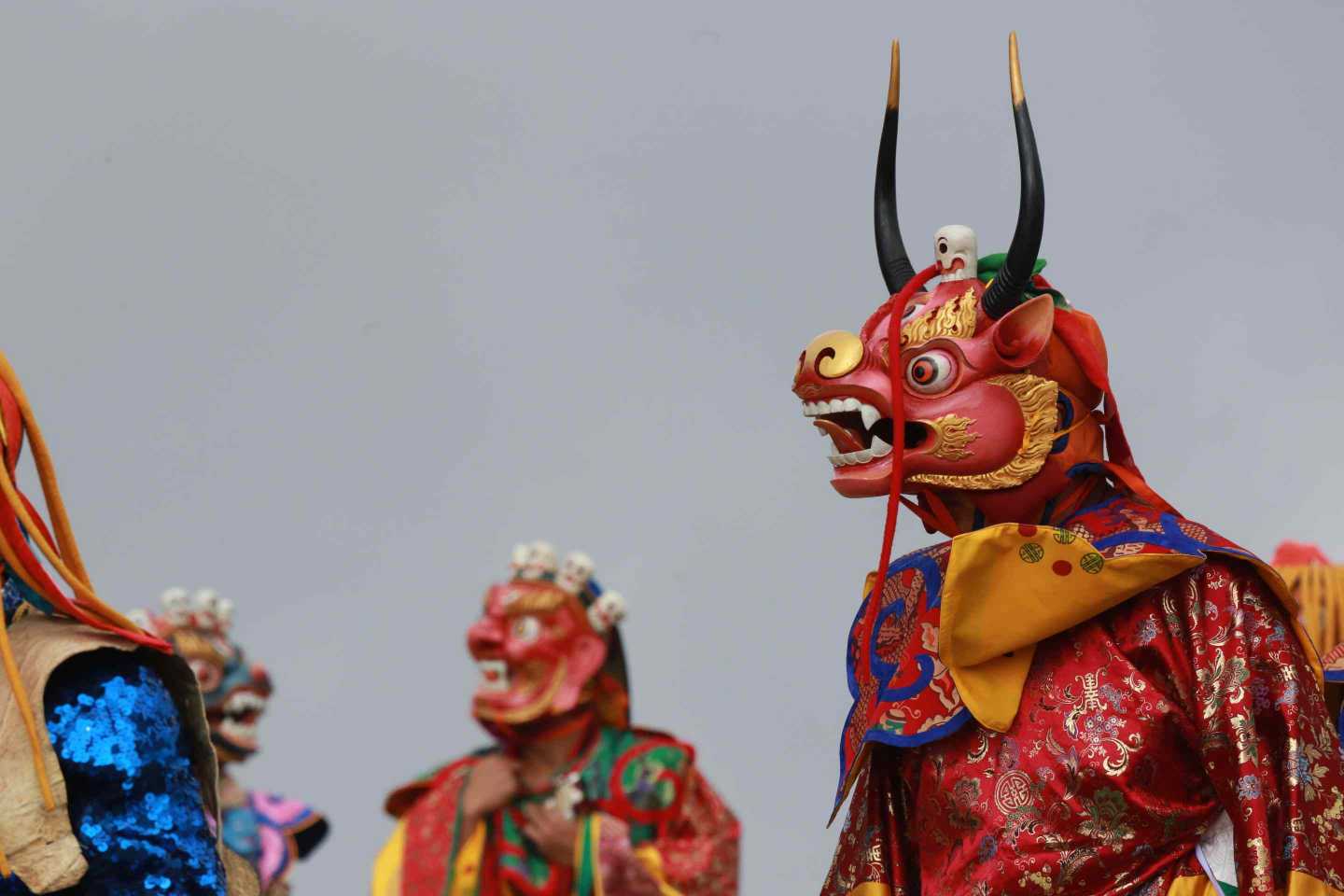
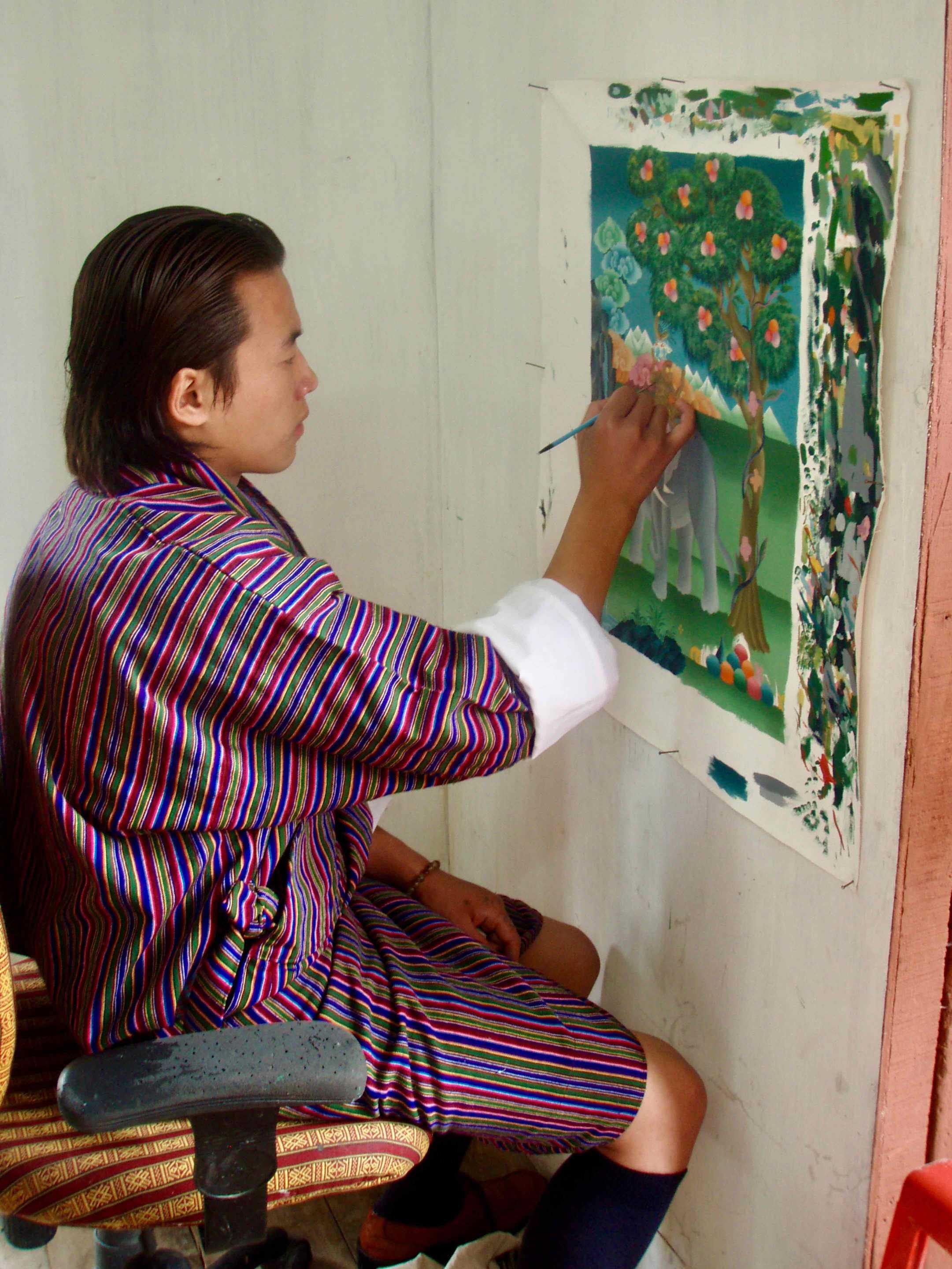
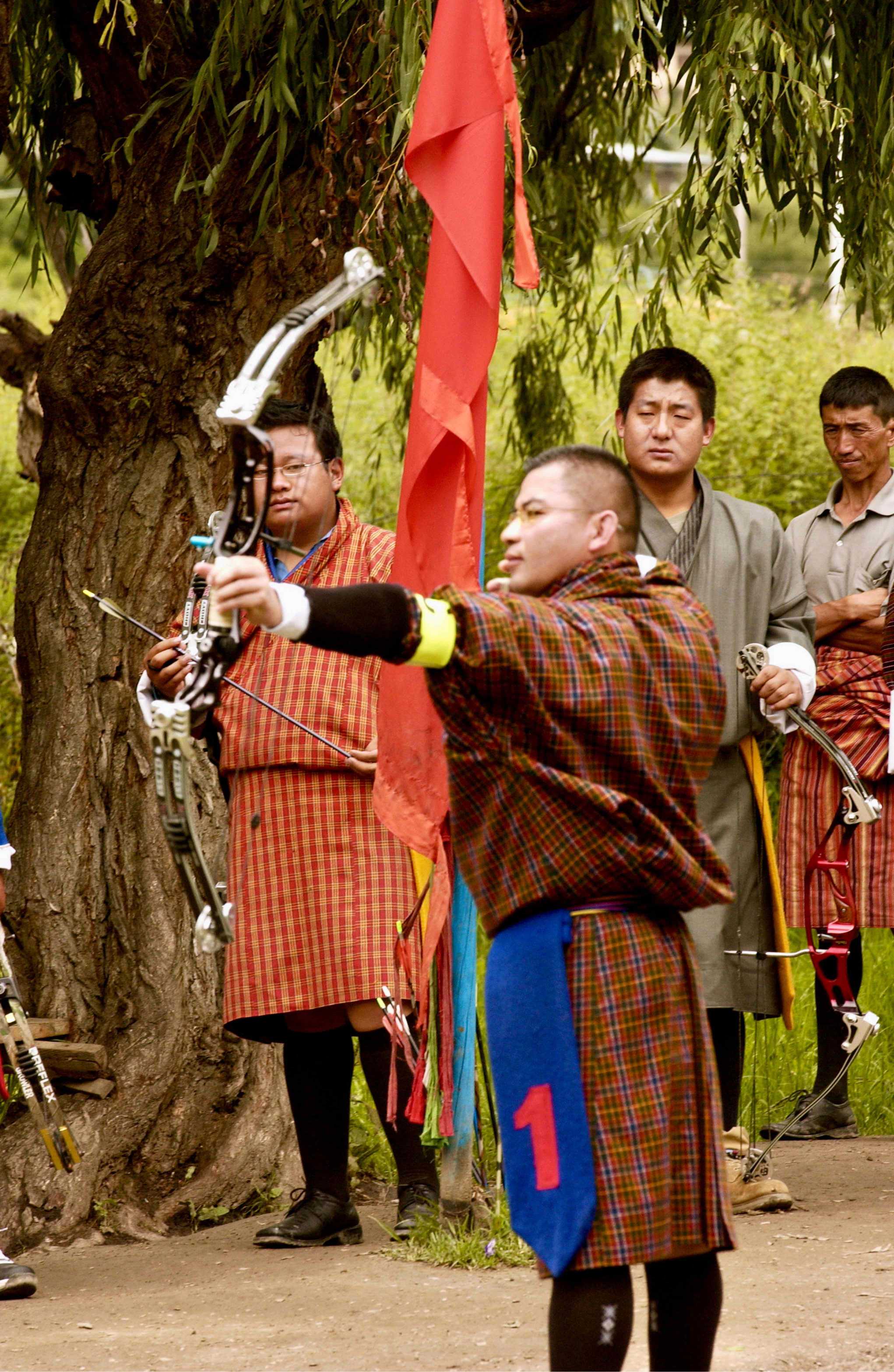
Culture of Bhutan:
Bhutanese culture is deeply rooted in Buddhist traditions, which permeate every aspect of daily life in the kingdom. Here are some key elements of Bhutanese culture:
- Buddhism: Buddhism is the cornerstone of Bhutanese culture, and the majority of the population adheres to the Vajrayana tradition of Mahayana Buddhism. Monasteries, stupas, and prayer flags are common sights across the country, and religious festivals, known as tshechus, are celebrated with great fervor and devotion throughout the year.
- Gross National Happiness (GNH): Bhutan famously measures its progress not only by economic indicators but also by Gross National Happiness (GNH), a holistic approach to development that prioritizes the well-being and happiness of its citizens. This emphasis on spiritual and emotional well-being influences various aspects of Bhutanese culture, including social interactions, governance, and environmental conservation.
- Traditional Dress: Bhutanese people often wear traditional clothing known as the gho for men and the kira for women. The gho is a knee-length robe secured at the waist with a belt, while the kira is an ankle-length dress worn with a silk blouse and a colorful outer jacket. These garments are worn daily and hold significant cultural and social importance.
- Architecture: Bhutanese architecture is characterized by its unique blend of traditional designs and Buddhist symbolism. Dzongs, or fortress-monasteries, serve as administrative centers and religious institutions, featuring intricate woodwork, whitewashed walls, and towering watchtowers. Traditional Bhutanese houses, known as rammed-earth structures, are adorned with ornate carvings and brightly painted motifs.
- Cultural Festivals: Tshechus, or religious festivals, are vibrant celebrations that showcase Bhutanese culture through colorful masked dances, traditional music, and ceremonial rituals. These festivals, held annually in monasteries and dzongs across the country, attract locals and tourists alike and play an essential role in preserving Bhutanese heritage and identity.
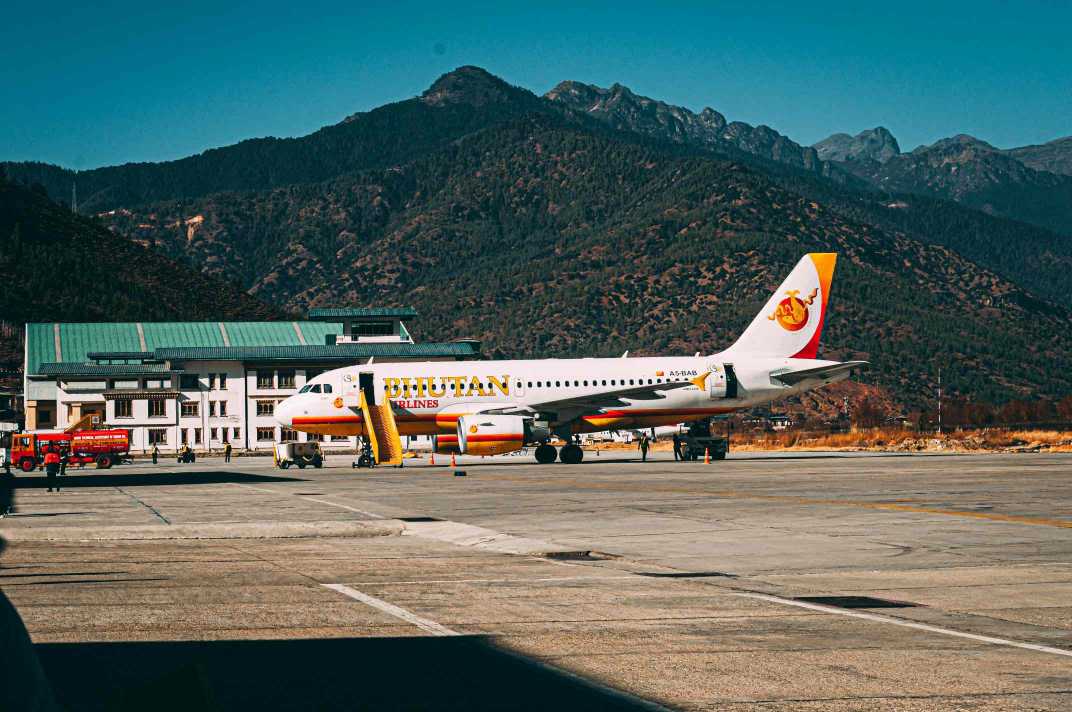
How to Reach Bhutan:
Bhutan’s primary international airport is Paro International Airport (PBH), located in the picturesque Paro Valley. However, due to the country’s strict tourism policies, visitors can only enter Bhutan through authorized tour operators and travel agents.
The most common way to reach Bhutan is by flying into Paro International Airport from select cities in neighboring countries such as India, Nepal, Bangladesh, Thailand, and Singapore. Drukair and Bhutan Airlines are the only airlines that operate flights to and from Bhutan.

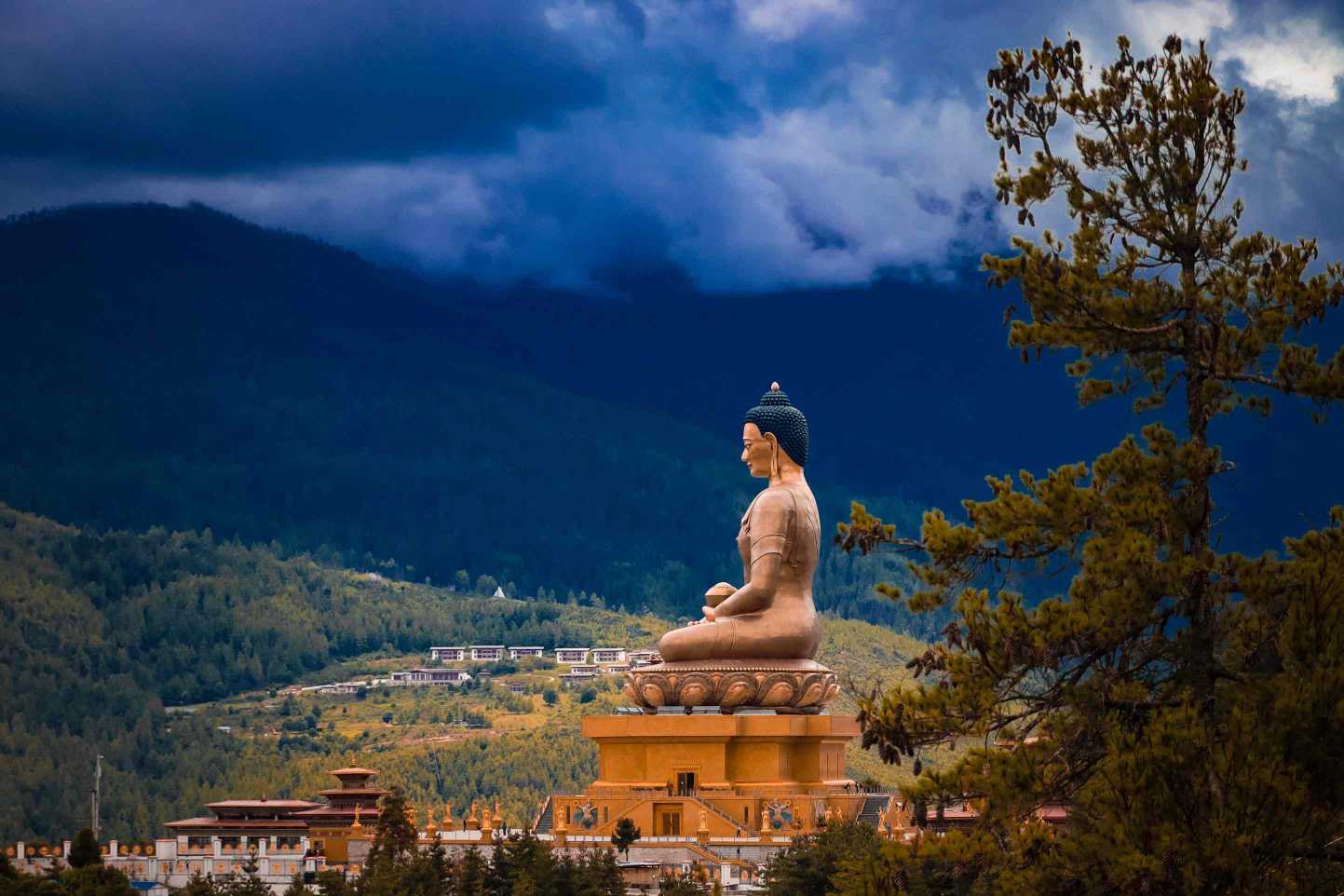
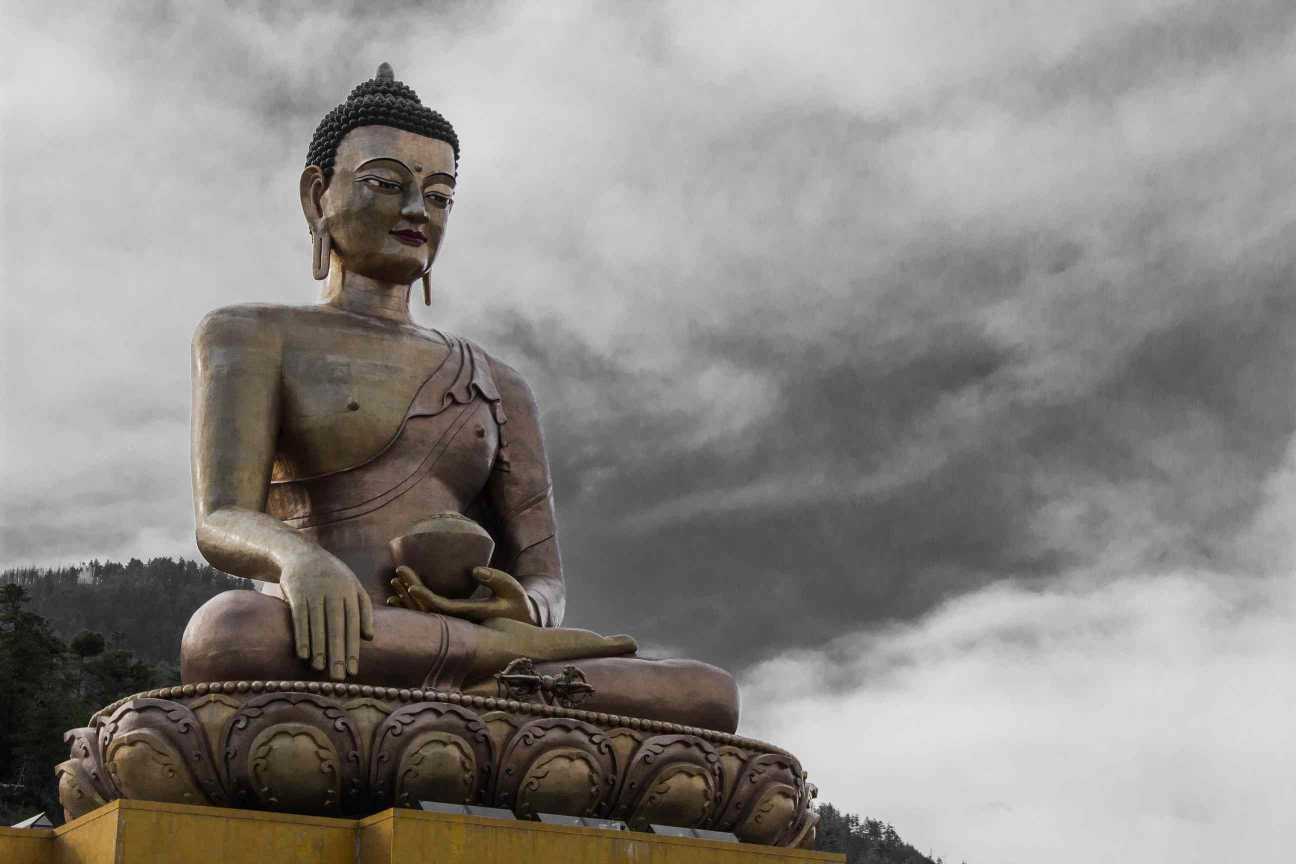

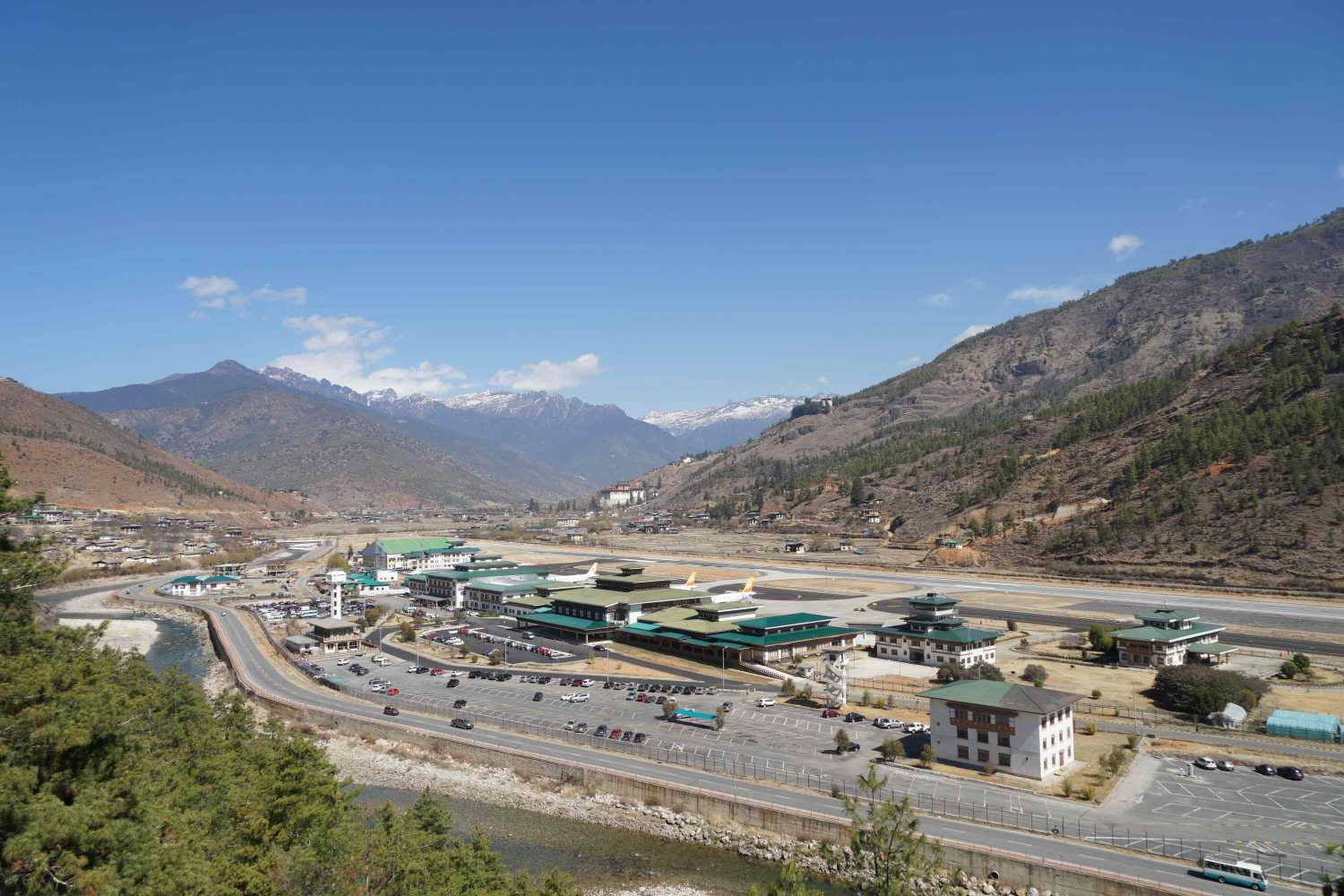
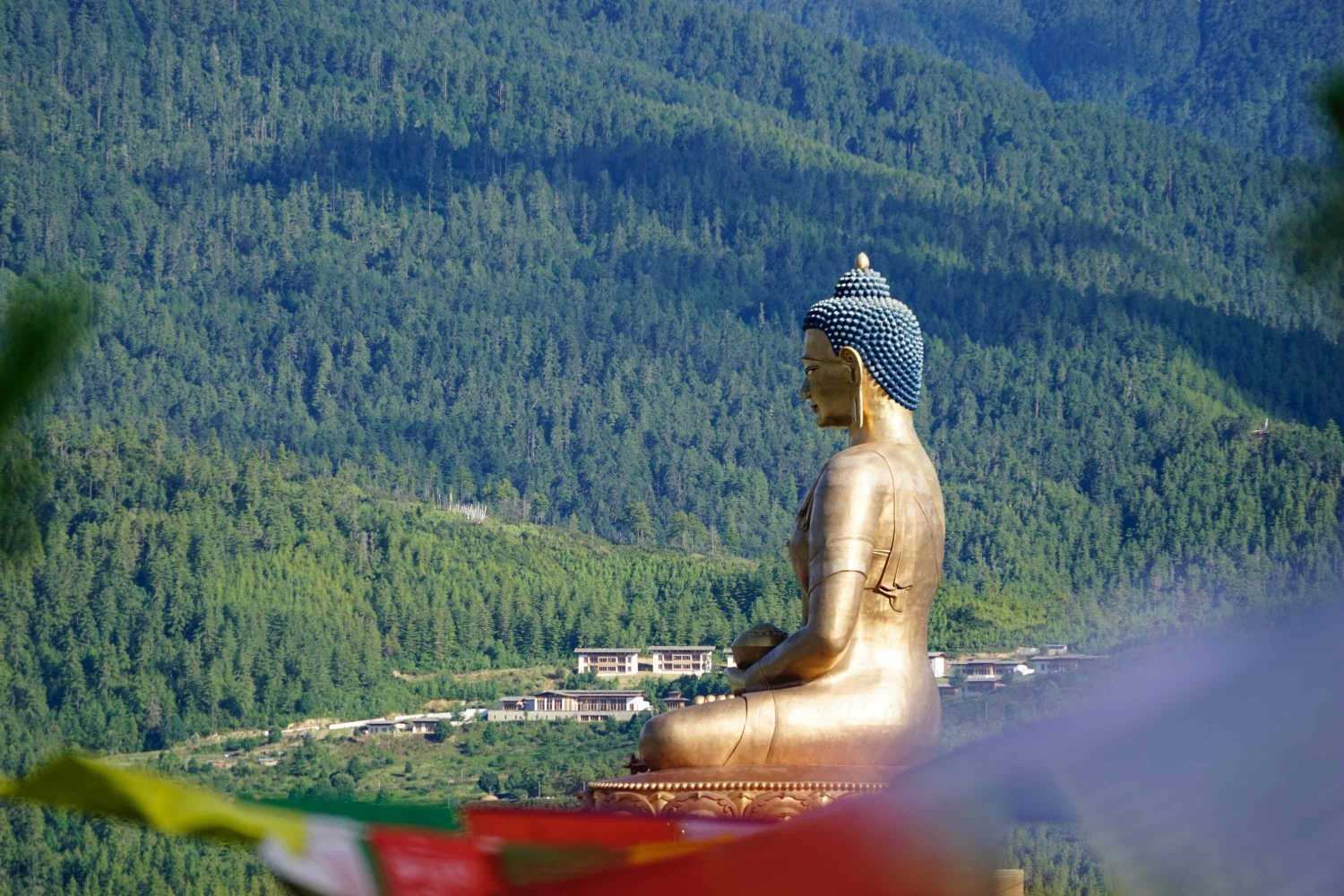
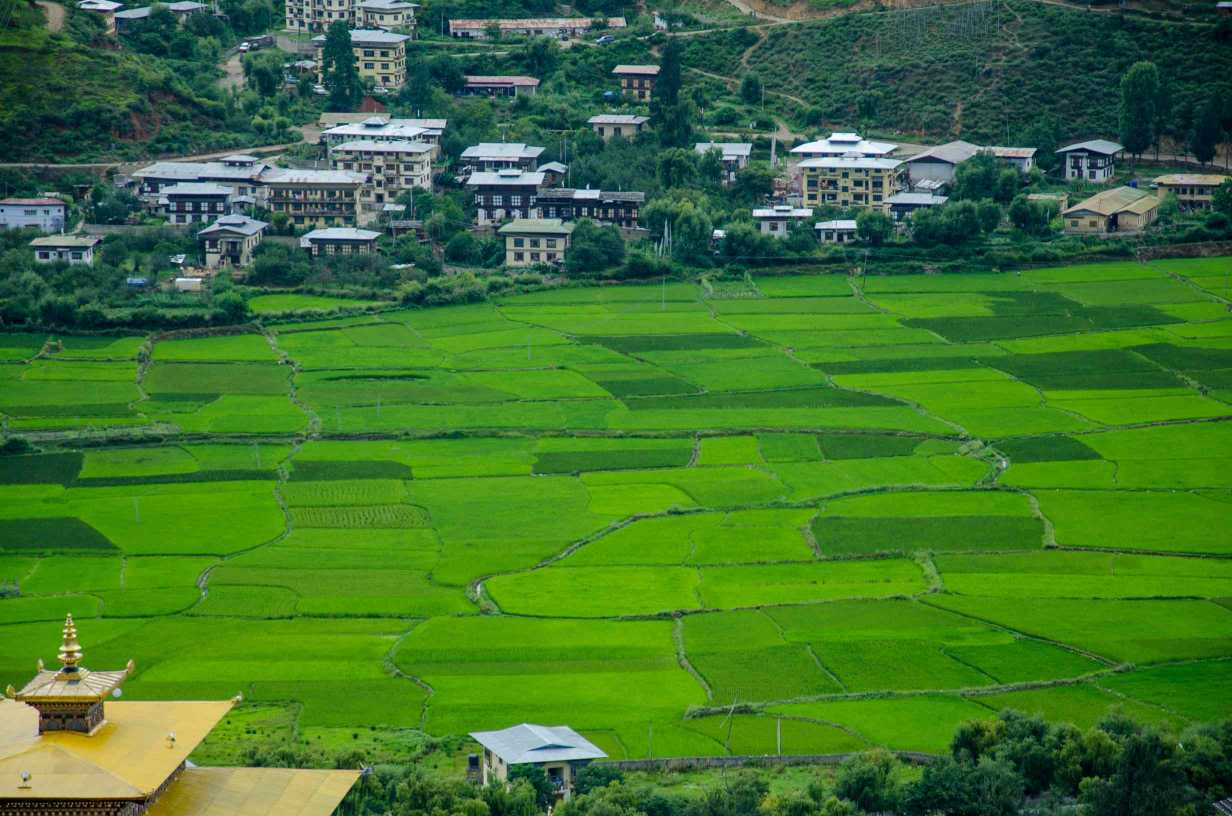

Accommodation Arrangements in Bhutan:
Accommodation options in Bhutan range from luxury hotels and resorts to cozy guesthouses and homestays, offering travelers a variety of choices to suit their preferences and budgets. Here are some common types of accommodations available in Bhutan:
- Luxury Hotels and Resorts: Bhutan boasts several luxury hotels and resorts that offer world-class amenities, personalized service, and stunning views of the surrounding landscapes. These properties often feature spa facilities, fine dining restaurants, and cultural experiences, providing guests with a luxurious retreat amidst the Himalayan wilderness.
- Mid-Range Hotels and Guesthouses: Mid-range hotels and guesthouses are available in major towns and cities across Bhutan, offering comfortable accommodations with essential amenities such as private bathrooms, hot water showers, and heating during the colder months. These establishments provide a convenient base for exploring local attractions and experiencing Bhutanese hospitality.
- Homestays: For a more immersive cultural experience, visitors can opt for homestays with local families in rural villages. Homestays offer an opportunity to experience traditional Bhutanese lifestyle, participate in daily activities, and enjoy home-cooked meals prepared with locally sourced ingredients.
- Camping: Camping is a popular option for outdoor enthusiasts seeking to explore Bhutan’s pristine wilderness. Travelers can camp at designated campsites in national parks, trekking routes, and remote valleys, immersing themselves in the natural beauty of the Himalayas under the starlit sky.
Overall, accommodations in Bhutan cater to a range of preferences and budgets, ensuring that every visitor can find a comfortable and memorable place to stay while exploring the kingdom’s cultural treasures and natural wonders.
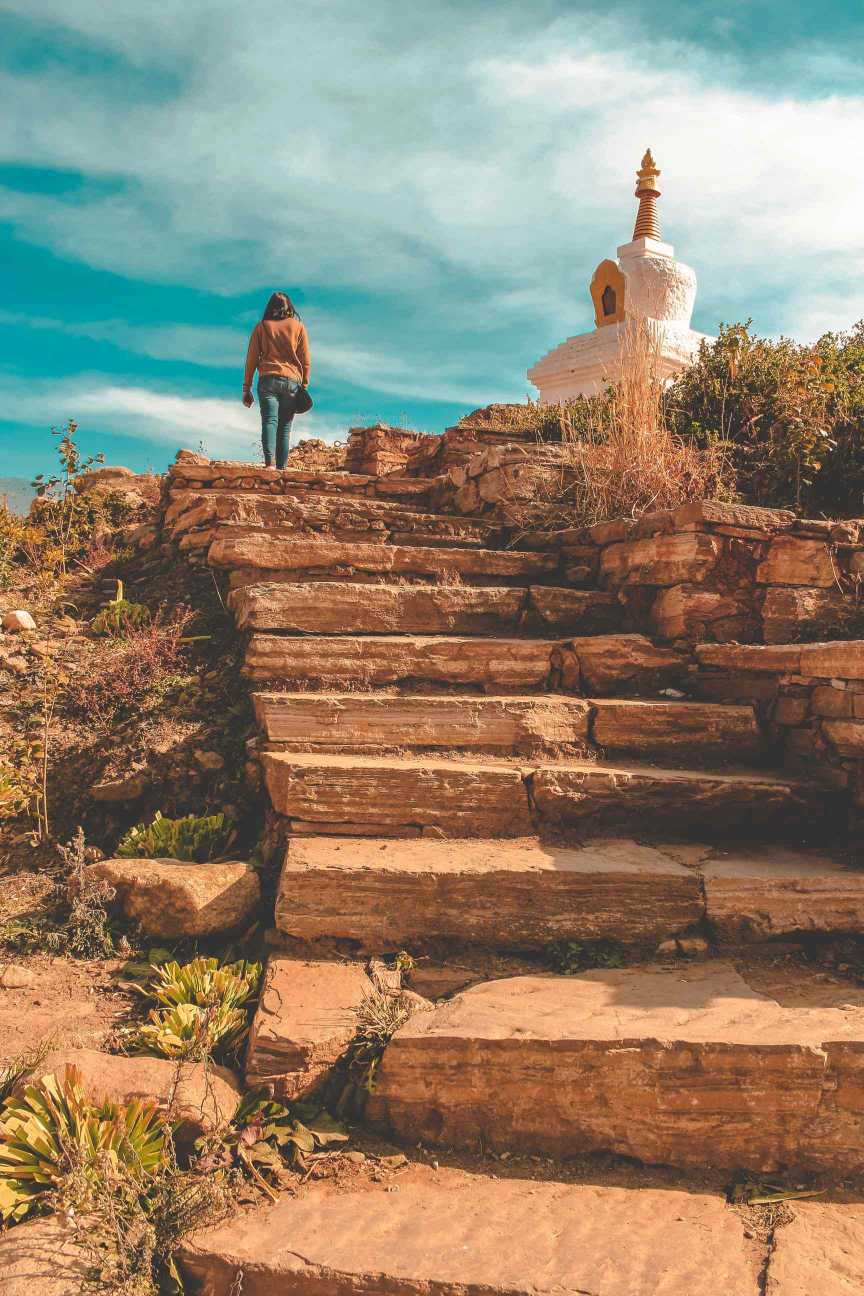
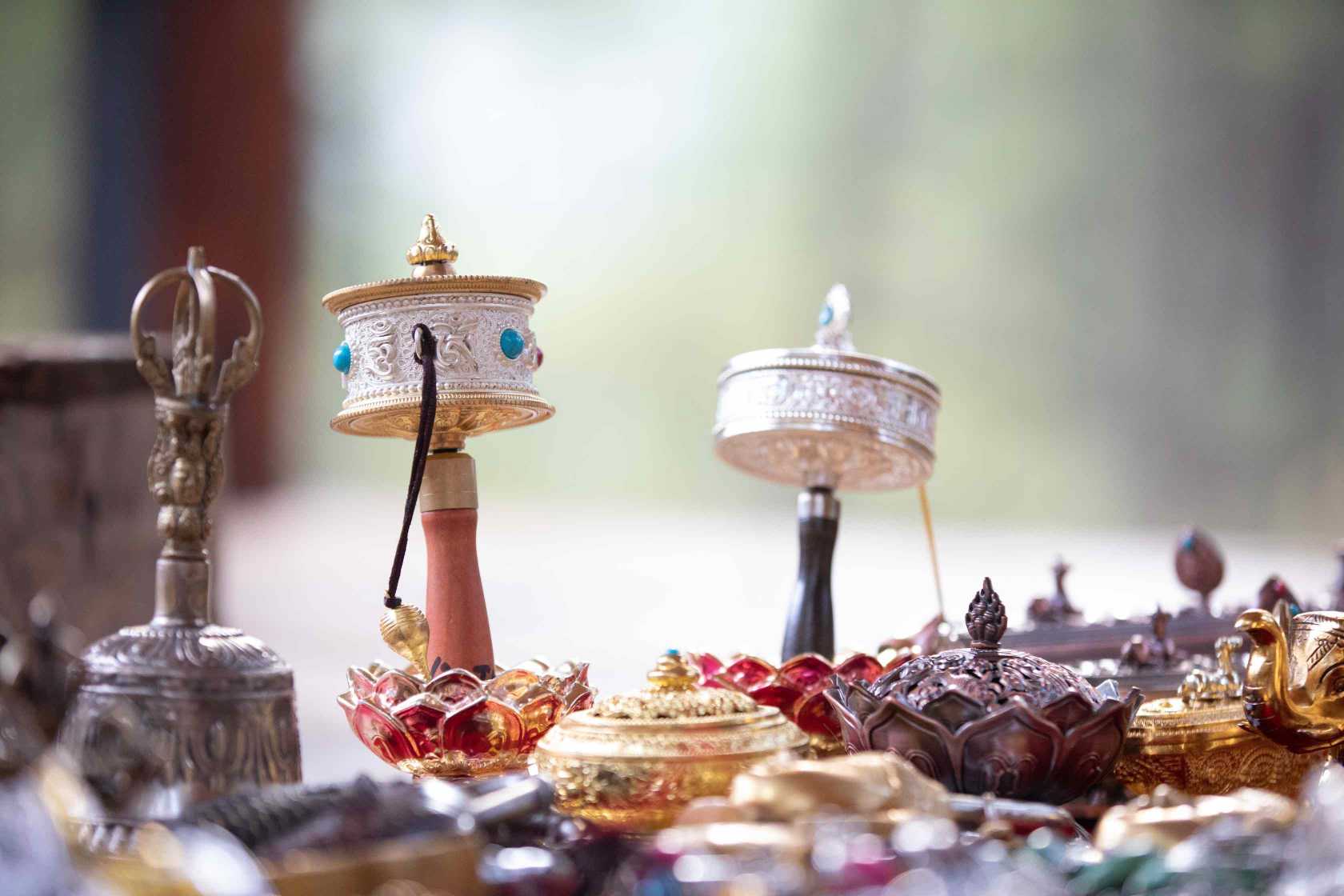

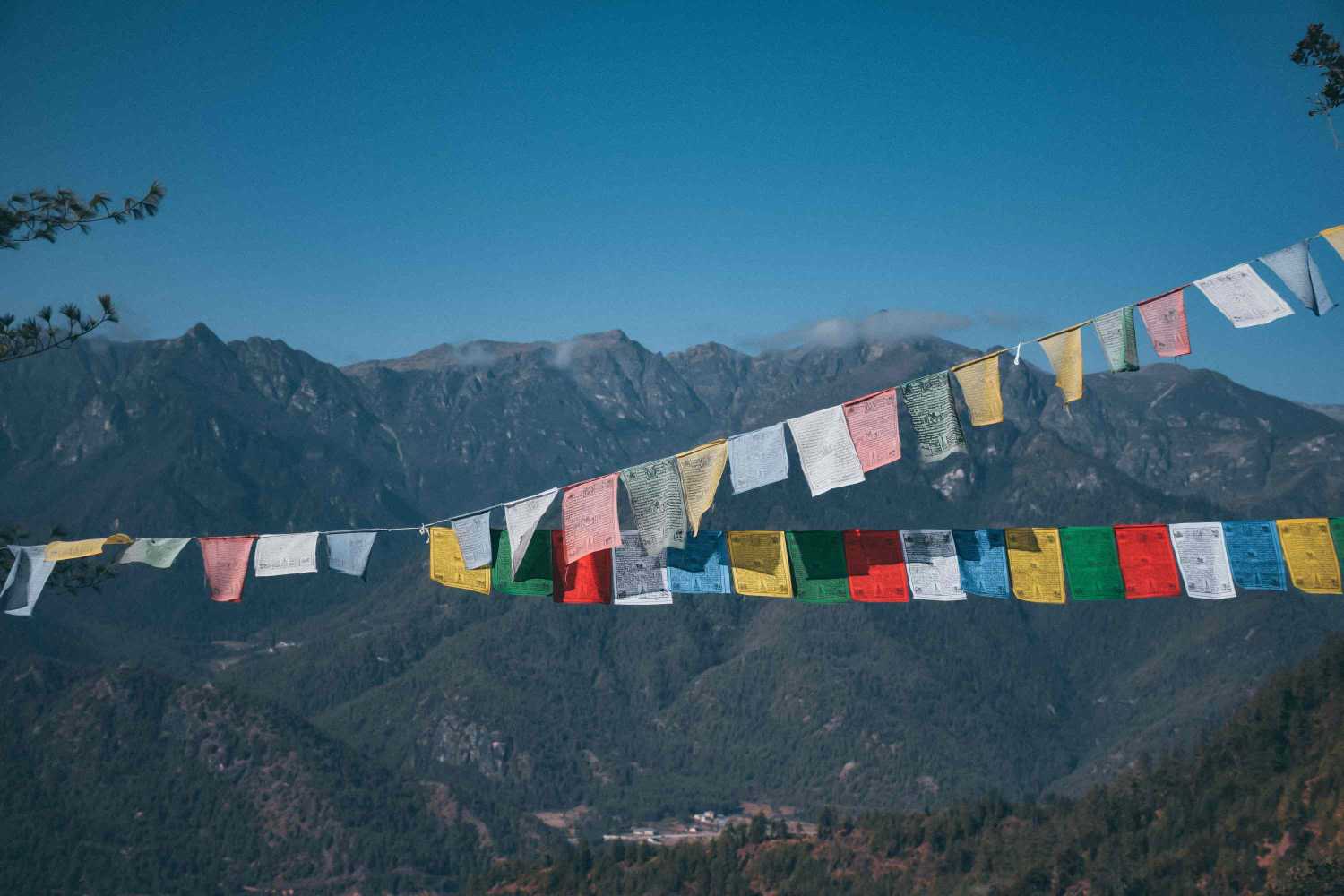
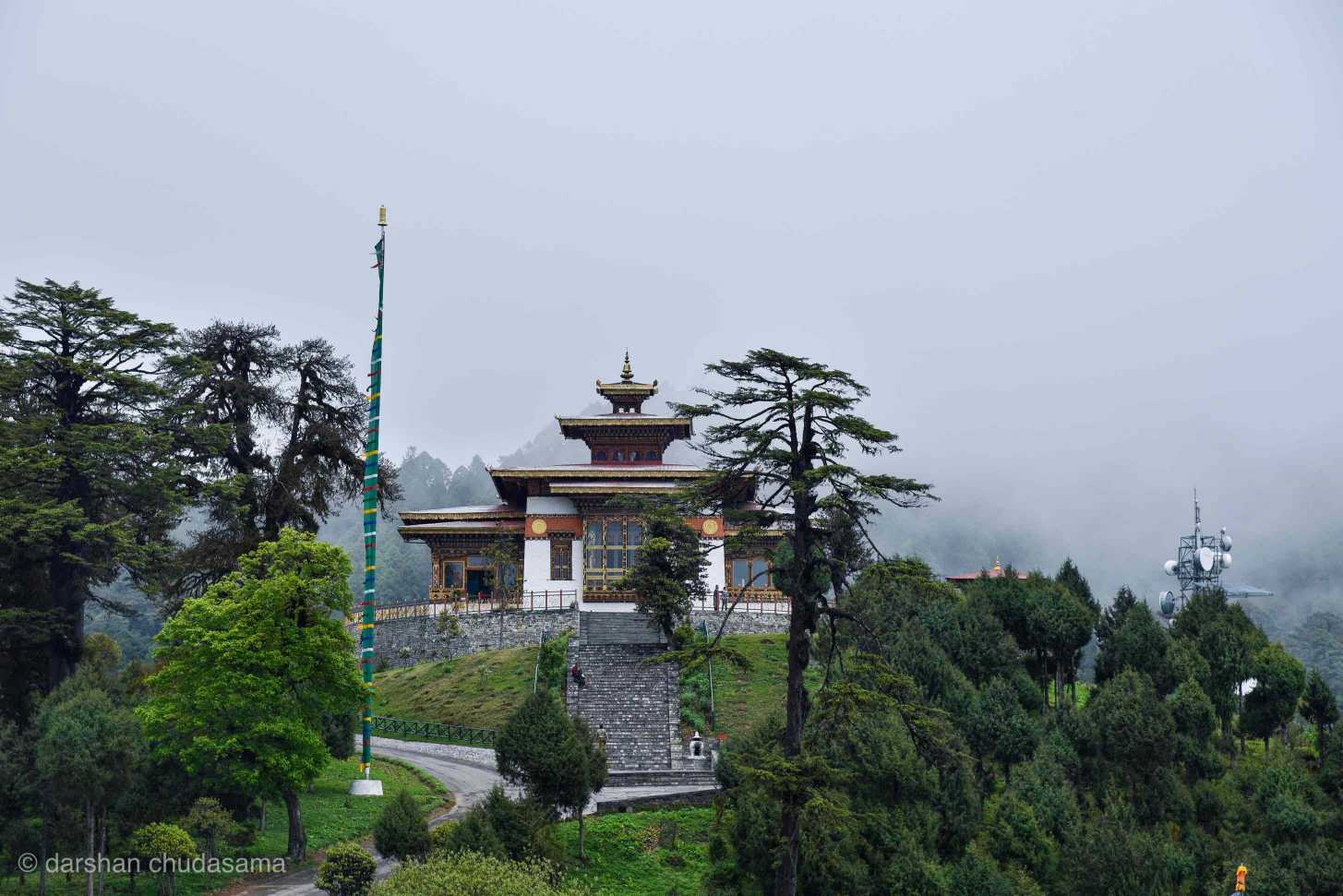
Local Foods:
- Ema Datshi: Considered Bhutan’s national dish, Ema Datshi is a spicy stew made with chili peppers (ema) and cheese (datshi), typically served with red rice. It is a staple of Bhutanese cuisine and reflects the country’s love for spicy flavors.
- Dumplings (Momos): Dumplings, known as momos, are a popular street food in Bhutan. These steamed or fried dumplings are filled with a variety of ingredients, such as minced meat (usually beef or pork), vegetables, and spices, and are often served with dipping sauces.
- Dried Yak Cheese: Yak cheese is a traditional Bhutanese delicacy made from the milk of yaks, which are native to the Himalayan region. The cheese is usually dried and cured, giving it a distinct flavor and texture. It is often served as a snack or used in cooking.
- Suja (Butter Tea): Suja is a traditional Bhutanese tea made with butter, salt, and tea leaves, typically served hot. It is a staple beverage in Bhutan and is enjoyed for its warming properties, especially in the cold mountainous regions.
- Red Rice: Red rice is a staple food in Bhutan, often served alongside savory dishes such as Ema Datshi or meat curries. It has a nutty flavor and a chewy texture, and its vibrant color adds visual appeal to the dining table.
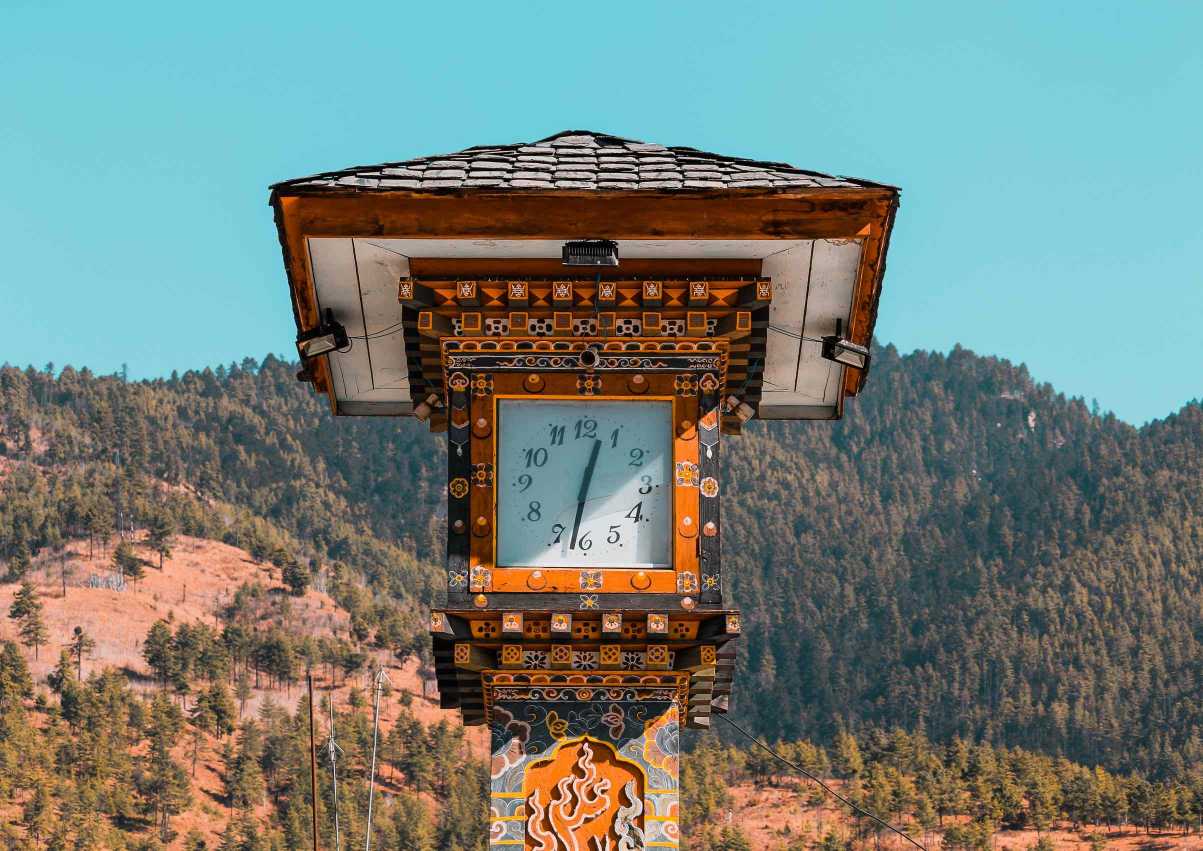
Best Time to Visit:
The best time to visit Bhutan is during the spring and autumn seasons, which offer mild temperatures, clear skies, and vibrant landscapes. The peak tourist seasons are from March to May and September to November, when the weather is most favorable for outdoor activities and sightseeing.
Spring (March to May) is a beautiful time to visit Bhutan, with blooming flowers, lush greenery, and pleasant temperatures ideal for trekking and exploring the countryside. It is also the season when many cultural festivals, such as the Paro and Thimphu Tshechus, take place, offering travelers a glimpse into Bhutanese culture and traditions.
Autumn (September to November) is another popular time to visit Bhutan, with clear skies, crisp air, and stunning mountain views. This season is perfect for trekking, wildlife spotting, and attending festivals, as the weather is generally dry and comfortable.

Where to Visit:
- Paro: Paro is a picturesque valley town and home to Bhutan’s only international airport, making it the gateway to the kingdom. Visitors to Paro can explore attractions such as the iconic Tiger’s Nest Monastery (Paro Taktsang), the historic Paro Dzong, and the National Museum of Bhutan.
- Thimphu: Thimphu is the capital city of Bhutan and the cultural and political center of the country. Highlights of Thimphu include the Tashichho Dzong, the National Memorial Chorten, the Buddha Dordenma statue, and the lively weekend market.
- Punakha: Punakha is known for its stunning Punakha Dzong, located at the confluence of the Mo Chhu and Pho Chhu rivers. Visitors can also explore the Chimi Lhakhang temple, hike to the Khamsum Yulley Namgyal Chorten, and enjoy scenic views of the surrounding rice fields and mountains.
- Bumthang: Bumthang is a region in central Bhutan known for its beautiful valleys, ancient monasteries, and rich cultural heritage. Highlights of Bumthang include the Jakar Dzong, Jambay Lhakhang, Kurje Lhakhang, and the picturesque Ura Valley.
These are just a few of the many incredible destinations to explore in Bhutan, each offering its own unique blend of natural beauty, cultural significance, and spiritual tranquility. Whether you’re trekking in the Himalayas, attending a colorful festival, or simply immersing yourself in the peaceful ambiance of a rural village, Bhutan promises an unforgettable journey of discovery and adventure.

Where and What to Shop:
- Thimphu Craft Market: Located in the heart of Thimphu, the craft market is a bustling hub of local artisans selling a variety of handmade crafts, including traditional textiles, hand-woven fabrics, wooden carvings, ceramics, and jewelry. It’s an excellent place to pick up authentic Bhutanese souvenirs and support local artisans.
- Norzin Lam Street: Norzin Lam is Thimphu’s main shopping street, lined with shops and boutiques offering a wide range of goods, including clothing, accessories, electronics, and household items. Visitors can browse through a mix of traditional Bhutanese products and modern imports while soaking in the lively atmosphere of the city.
- Bhutanese Handicrafts Emporium: Located near the Clock Tower Square in Thimphu, the Handicrafts Emporium is a government-run store showcasing a curated selection of high-quality Bhutanese handicrafts, including textiles, paintings, woodwork, and metalwork. It’s a convenient one-stop shop for those looking for authentic Bhutanese crafts.
- Weekend Market in Paro: The weekend market in Paro is a vibrant affair where local farmers and vendors gather to sell fresh produce, spices, handmade crafts, and household goods. Visitors can immerse themselves in the bustling atmosphere, sample local delicacies, and purchase unique souvenirs to take home.

Things to Do:
- Trekking: Bhutan offers some of the world’s most scenic trekking routes, including the famous Druk Path Trek, Snowman Trek, and Jomolhari Trek. Trekking enthusiasts can explore pristine mountain landscapes, ancient forests, and remote villages while experiencing the tranquility and beauty of the Himalayas.
- Visit Monasteries and Dzongs: Explore Bhutan’s rich cultural heritage by visiting ancient monasteries and dzongs (fortress-monasteries) scattered across the country. Highlights include the iconic Tiger’s Nest Monastery, Punakha Dzong, and Trongsa Dzong, each offering insights into Bhutanese history, architecture, and spirituality.
- Attend Festivals: Experience the vibrant colors and cultural traditions of Bhutan by attending one of the country’s many religious festivals, known as tshechus. These annual events feature masked dances, ritual performances, and traditional music, offering visitors a unique opportunity to witness Bhutanese culture come to life.
- Hot Springs: Relax and rejuvenate in Bhutan’s natural hot springs, known as tshachus, which are believed to have therapeutic properties. Popular hot spring destinations include Gasa, Punakha, and Chubu, where visitors can soak in the warm mineral waters surrounded by stunning mountain scenery.
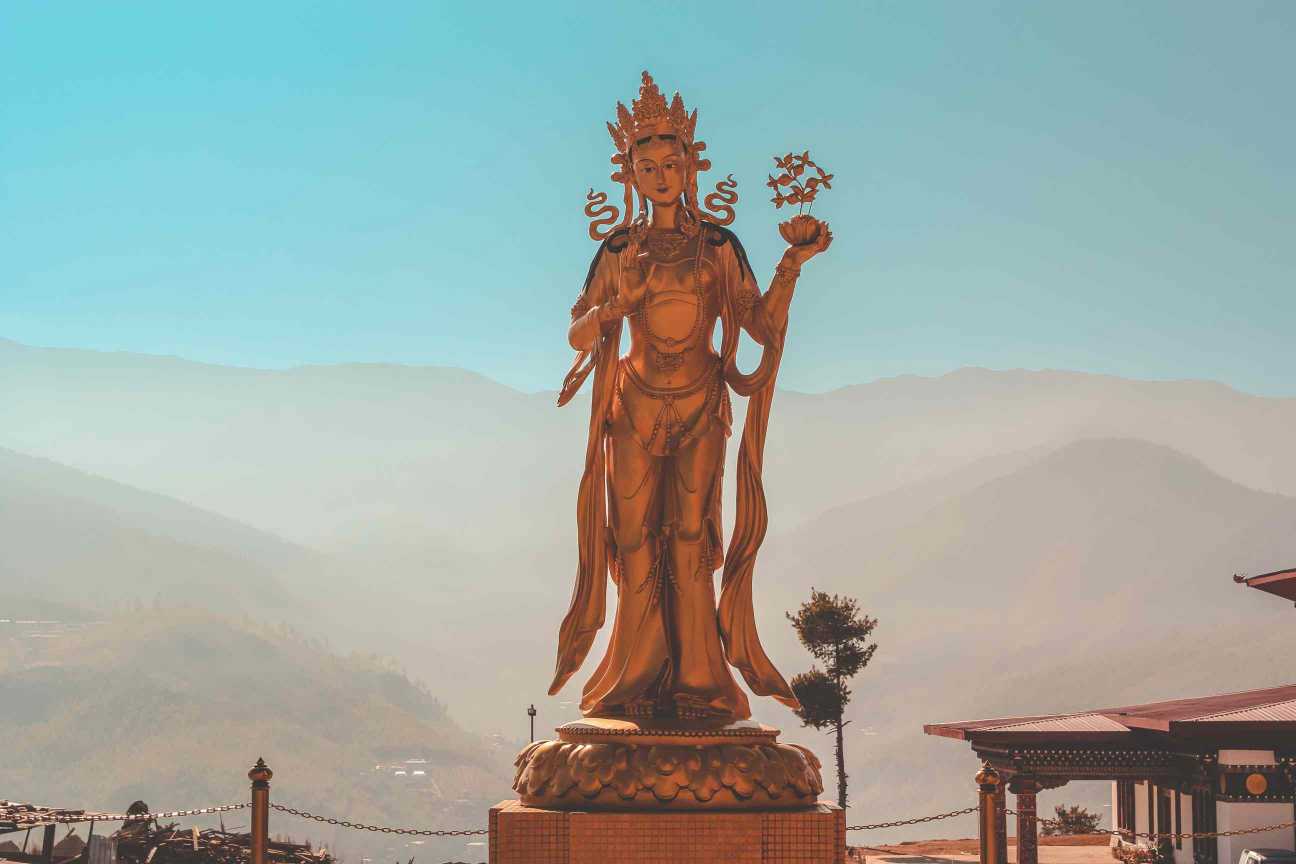
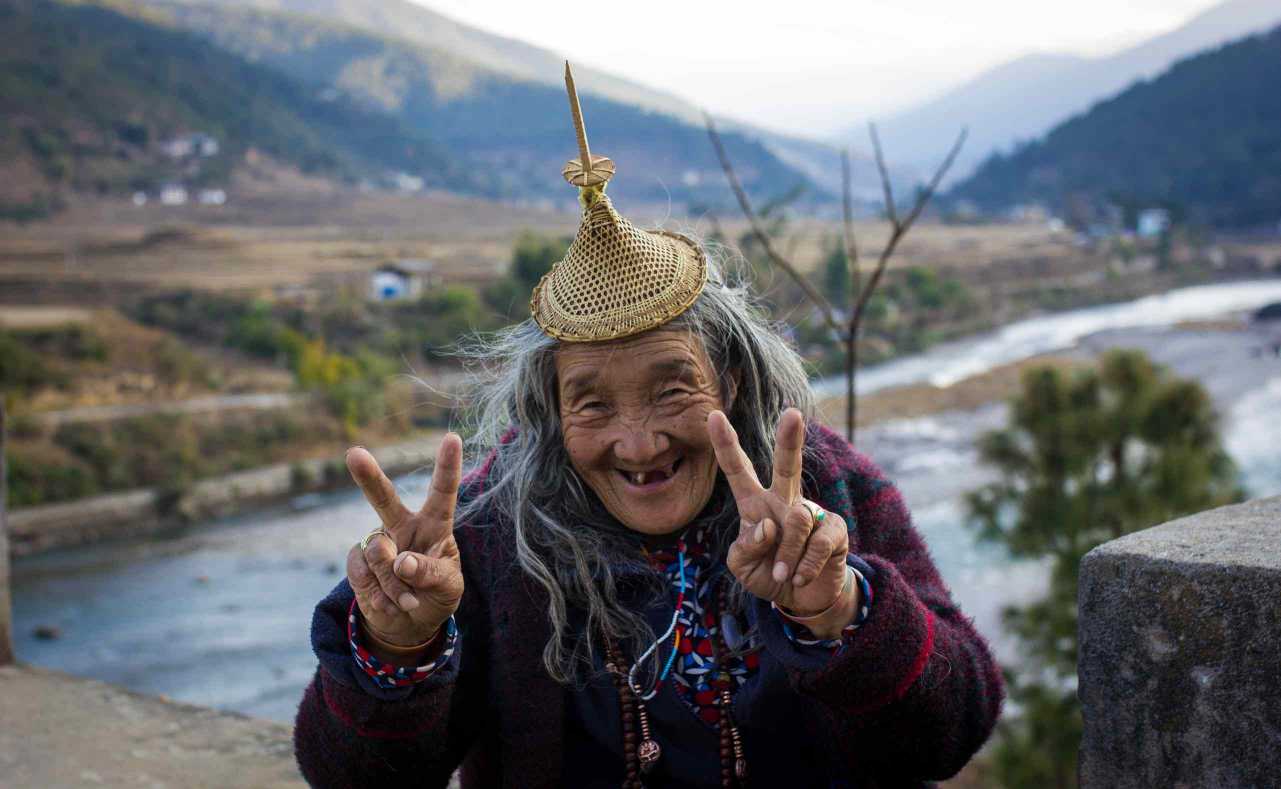
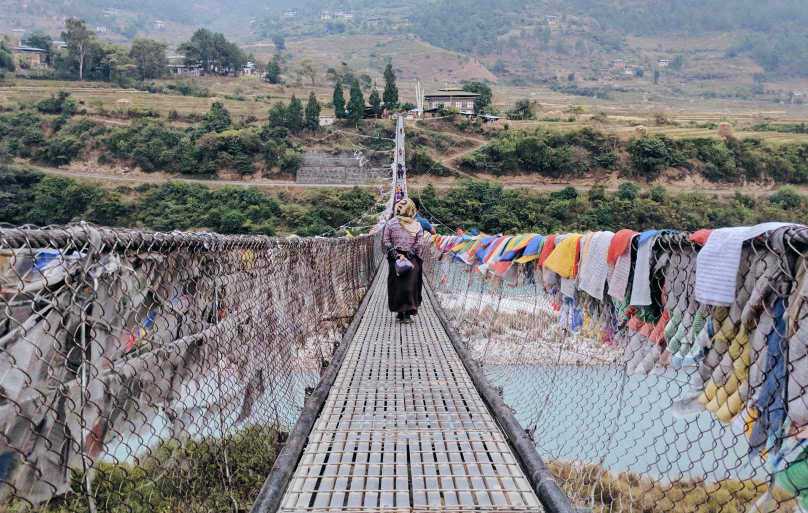

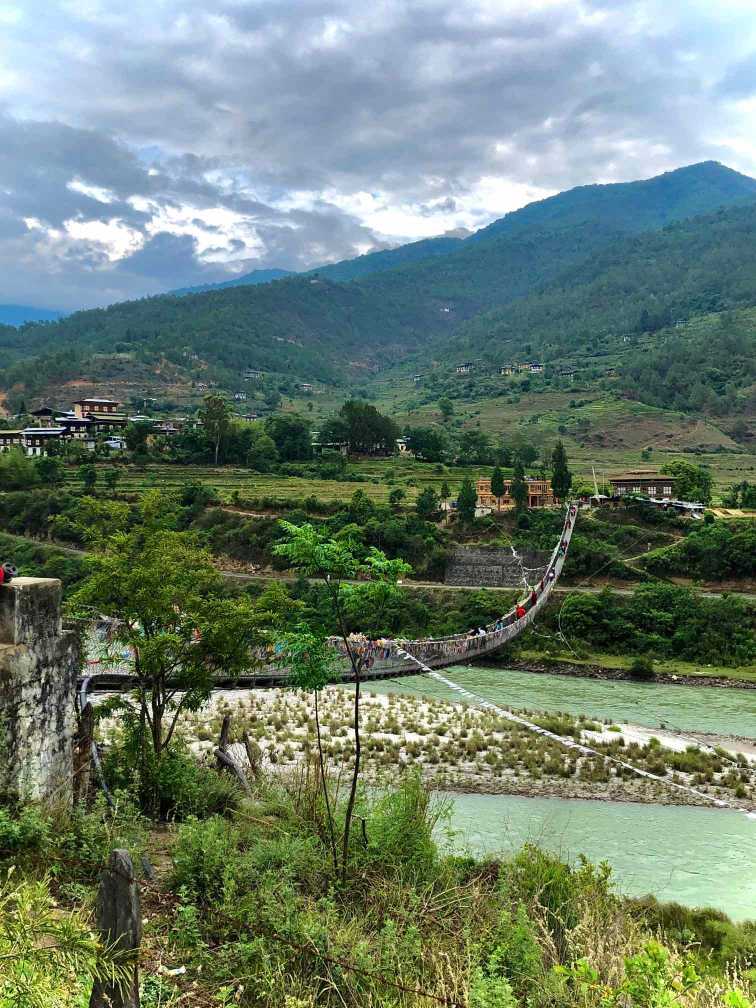
What to Pack:
- Clothing: Pack lightweight, breathable clothing suitable for Bhutan’s variable climate, including layers for cooler temperatures in the mountains and lightweight fabrics for warmer weather in the valleys. Don’t forget to include a waterproof jacket or poncho for unexpected rain showers.
- Comfortable Shoes: Bring sturdy, comfortable shoes suitable for walking and hiking, especially if you plan to explore Bhutan’s scenic trails and monasteries.
- Sun Protection: Pack sunscreen, sunglasses, a wide-brimmed hat, and lightweight clothing with UPF protection to shield yourself from the strong Himalayan sun.
- Travel Essentials: Don’t forget to pack essential items such as a reusable water bottle, insect repellent, hand sanitizer, and any necessary medications or personal toiletries.
Bhutan, with its pristine natural beauty, rich cultural heritage, and commitment to Gross National Happiness, offers travelers a truly unique and unforgettable experience. Whether you’re trekking through the majestic Himalayas, exploring ancient monasteries and dzongs, or immersing yourself in the vibrant colors and traditions of a local festival, Bhutan captivates the senses and nourishes the soul. With its warm hospitality, breathtaking landscapes, and deep-rooted spirituality, Bhutan is not just a destination—it’s a journey of discovery, enlightenment, and transformation.



